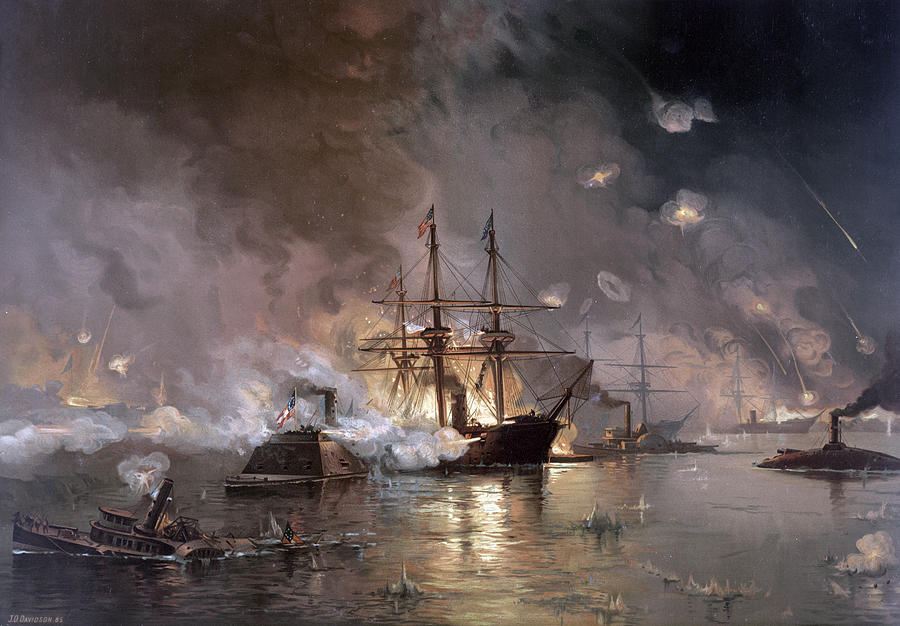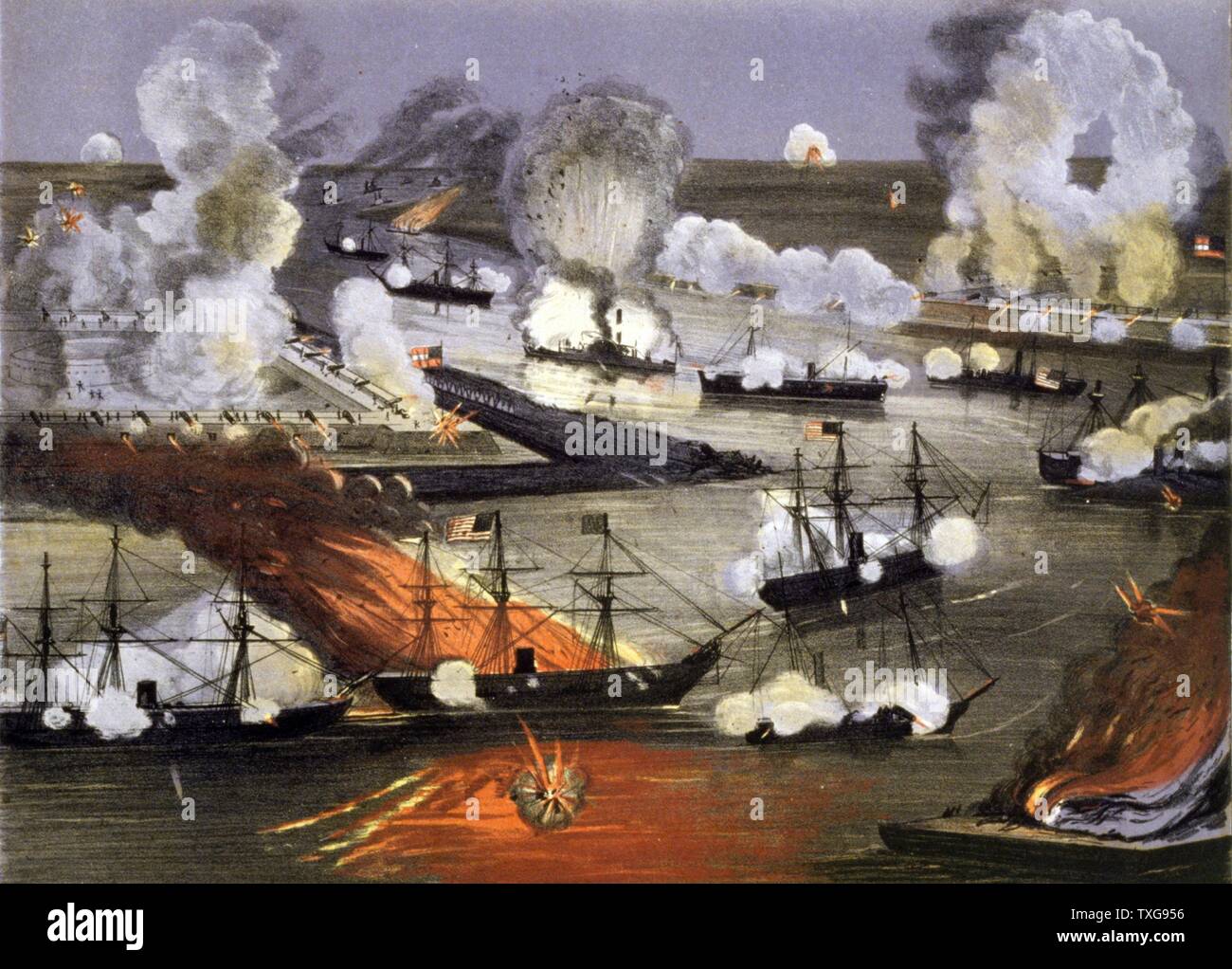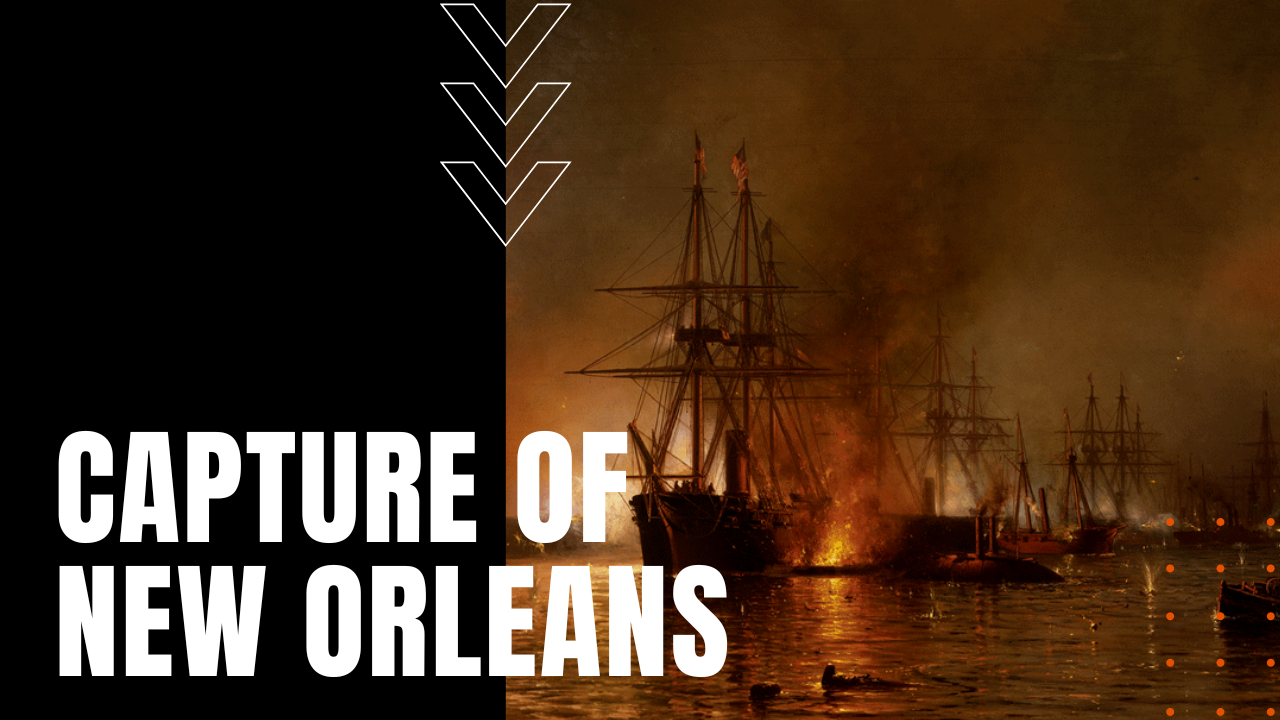
The Crescent City’s Crucible: How New Orleans Fell, Reshaping the Civil War
In the spring of 1862, New Orleans, the "Queen of the South," pulsed with a vibrant, defiant energy. It was the largest city in the Confederacy, a cosmopolitan hub where European sophistication mingled with American ingenuity, fueled by the vast agricultural wealth of the Mississippi Valley. Its strategic importance was undeniable: control of the city meant control of the river, the economic lifeline of a nascent nation built on cotton and commerce. Yet, beneath the veneer of bustling wharves and grand antebellum homes, a silent dread began to creep in, a premonition of the storm gathering on the horizon. The Union, with its burgeoning naval power and an unshakeable resolve to "anaconda" the Confederacy, had set its sights on this irreplaceable prize. The ensuing drama, a daring naval assault followed by a controversial occupation, would not only wrench New Orleans from Confederate hands but would irrevocably alter the course of the American Civil War.
The Union’s grand strategy, dubbed the Anaconda Plan by its architect, General Winfield Scott, envisioned strangling the Confederacy by blockading its coasts and seizing control of the Mississippi River. New Orleans, sitting astride the river’s mouth, was the lynchpin of this audacious scheme. Its capture would sever the Confederacy’s access to the Gulf of Mexico, choke off vital supplies, and split the rebellious states in two. President Abraham Lincoln understood its significance, reportedly stating, "The war can never be brought to a close until the Mississippi River is opened to the free navigation of trade."
To achieve this monumental task, the Union assembled a formidable force under two equally formidable, if vastly different, commanders. Leading the naval assault was Flag Officer David Glasgow Farragut, a sixty-year-old veteran whose career stretched back to the War of 1812. Farragut was a man of iron will and daring, unburdened by conventional naval tactics. His fleet consisted of seventeen warships, including his flagship, the USS Hartford, along with a flotilla of mortar schooners commanded by Commander David Dixon Porter. Accompanying them, though largely spectators during the initial phase, was a contingent of 18,000 Union troops under the command of Major General Benjamin Butler, a lawyer-turned-politician-turned-general whose reputation for administrative efficiency and controversial decrees would soon precede him.

The Confederate defenses, while seemingly robust, harbored critical weaknesses. Guarding the river approach some seventy miles downstream from New Orleans were two formidable masonry forts: Fort Jackson on the west bank and Fort St. Philip on the east. These bastions, armed with 126 heavy guns between them, were considered virtually impregnable. Further bolstering the defenses was a massive chain stretched across the river, supported by dismasted schooners, designed to impede any attacking fleet. A small flotilla of Confederate gunboats, including the ironclad ram CSS Manassas, and several fire rafts were also positioned to meet the invaders. Yet, despite these imposing obstacles, the Confederate command, under Major General Mansfield Lovell, had spread its resources thin, expecting the main Union attack to come from the north via the river. The city itself was lightly defended, its meager garrison ill-equipped and poorly motivated.
Farragut’s assault began on April 18, 1862, with a relentless six-day bombardment of Fort Jackson and Fort St. Philip by Porter’s mortar schooners. Day and night, thousands of shells rained down on the forts, tearing through their brickwork and demoralizing the garrisons. Yet, despite the intensity of the barrage, the forts held. The chain across the river, though damaged, remained largely intact, and the Confederate guns, though battered, continued to return fire. Farragut, a man of action, grew impatient. He realized that a prolonged siege would only allow the Confederates to reinforce the city. He convened a council of war with his captains, laying out his audacious plan: to run the forts under the cover of darkness.
On the night of April 24, 1862, in the pre-dawn hours, Farragut issued his famous order: "Damn the torpedoes! Full steam ahead!" (Though this quote is more famously associated with the Battle of Mobile Bay, it perfectly encapsulates his philosophy at New Orleans). With the chain across the river finally breached by two Union gunboats, Farragut’s fleet, organized into three columns, steamed upstream into a cauldron of fire and chaos. The air was thick with the acrid smell of gunpowder and burning tar from Confederate fire rafts. Shells shrieked through the night, illuminating the churning river and the desperate struggle below.
The scene was one of unparalleled terror and heroism. Farragut, tied to the rigging of the USS Hartford to better observe the battle, watched as his ships bravely navigated the gauntlet. The Hartford itself ran aground while engaging Fort St. Philip, only to be freed by its engines. It then found itself engulfed by a fire raft, but quick action by the crew extinguished the flames, and the ship continued its relentless advance. The USS Brooklyn, another of Farragut’s lead ships, also faced intense fire, suffering numerous casualties. Confederate gunboats and the ram Manassas engaged the Union fleet in close-quarters combat, but they were ultimately outmatched by Farragut’s superior numbers and firepower. By dawn, after a brutal, four-hour engagement, Farragut’s main force, though battered, had successfully run past the forts, leaving them isolated and cut off.
With the Union fleet now steaming unimpeded towards New Orleans, the city descended into a maelstrom of panic and defiance. General Lovell, realizing the hopelessness of his position with the forts bypassed and his meager forces unable to stop a powerful fleet, ordered his troops to evacuate. As Farragut’s ships approached on April 25th, they were met not by resistance, but by a city in self-destructive frenzy. Citizens, driven by a desperate patriotism and a desire to deny the enemy any spoils, set fire to cotton bales, sugar, tobacco, and other valuable commodities. The sky above New Orleans glowed orange with the inferno, and the air was thick with smoke and the cries of despair.
Farragut anchored his fleet before the city and demanded its surrender. Mayor John T. Monroe, caught between the Union fleet and his own defiant citizens, initially refused to formally surrender, stating he had no authority to do so. He also refused to remove the Louisiana state flag and replace it with the Stars and Stripes, a deeply symbolic act. In response, a detachment of Marines was sent ashore to raise the Union flag over the U.S. Custom House and the Mint. As the Union flag fluttered above the city, a profound silence fell over New Orleans, broken only by the distant crackle of burning warehouses.
Though the city had been taken by the Navy, it was Benjamin Butler’s job to hold it. On May 1, 1862, Butler’s troops formally occupied New Orleans, initiating a controversial and often brutal period of martial law that would earn him the moniker "Beast Butler." Butler was an effective administrator who quickly restored order, cleaned up the city, and implemented public health measures. He also cracked down harshly on Confederate sympathizers and those who resisted Union authority. He seized Confederate property, arrested those who publicly insulted Union soldiers, and enforced strict loyalty oaths.
His most infamous act was General Order No. 28, issued on May 15, 1862. This decree stated that if any woman insulted or showed contempt for a Union officer or soldier, she would be "regarded and held liable to be treated as a woman of the town plying her avocation." This order, perceived by many as an authorization for sexual assault, sparked outrage across the Confederacy and even drew condemnation from abroad. It was a stark example of Butler’s heavy-handed approach, which, while effective in suppressing dissent, deeply alienated the populace and cemented his reputation as a tyrant.

The capture of New Orleans was a pivotal moment in the Civil War. Strategically, it was a massive victory for the Union. It gave them control of the mouth of the Mississippi, significantly crippling the Confederacy’s ability to export cotton and import vital supplies. It also provided a crucial base of operations for further Union advances up the river, setting the stage for the eventual siege of Vicksburg and the complete severance of the Confederacy. Militarily, it was a stunning testament to Farragut’s audacious leadership and the prowess of the Union Navy. It demonstrated that even heavily fortified positions could be overcome by a combination of daring and naval power.
Psychologically, the fall of New Orleans was a devastating blow to Confederate morale. The loss of its largest city, a symbol of Southern pride and economic power, sent shockwaves through the Confederacy, eroding confidence in its ability to resist the Union’s might. Conversely, it provided a much-needed boost to Union morale, proving that the Anaconda Plan was viable and that the Union was capable of achieving decisive victories. Internationally, the capture of New Orleans further solidified Union claims to legitimacy and undermined Confederate hopes for foreign recognition, as it signaled the Union’s capacity to restore its authority over the rebellious states.
In the aftermath, New Orleans remained under Union occupation for the remainder of the war, a unique island of Union control in the heart of the Confederacy. It endured as a city transformed, a crucible where the old order was shattered and a new, albeit contested, reality began to take shape. The capture of the Crescent City was not just a battle won; it was a strategic masterpiece that tilted the scales of the Civil War, accelerating the Confederacy’s decline and bringing the Union one significant step closer to victory, forever etching the names of Farragut and Butler into the complex tapestry of American history. The echoes of that fiery night on the Mississippi, and the subsequent occupation, continued to reverberate through the city and the nation long after the guns fell silent.


